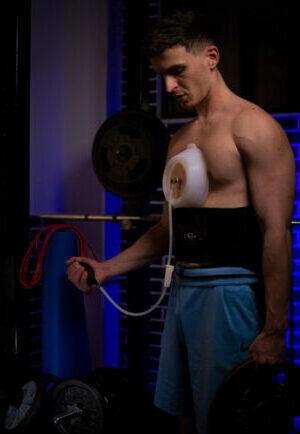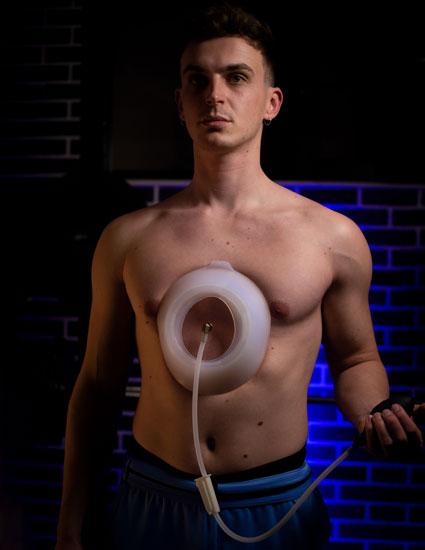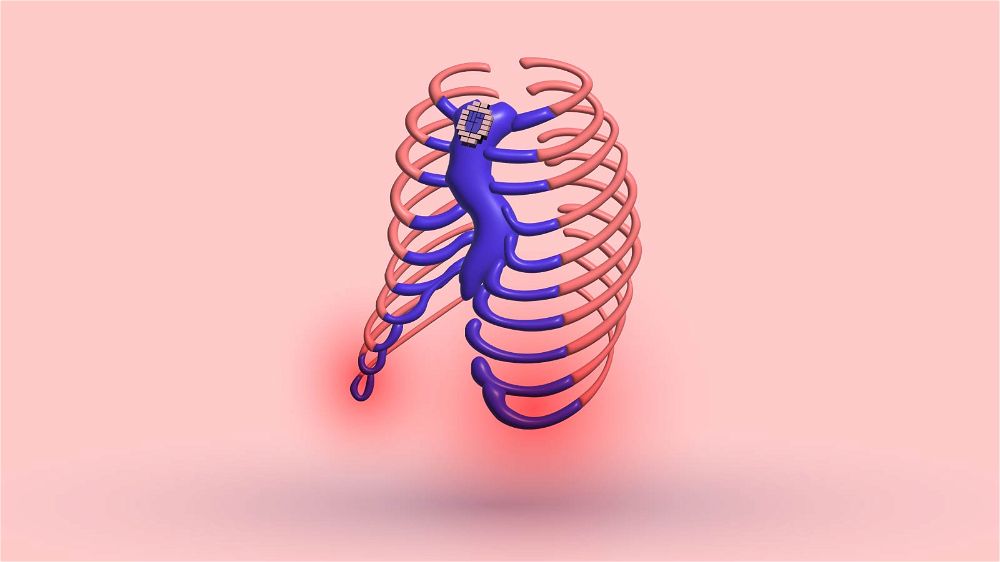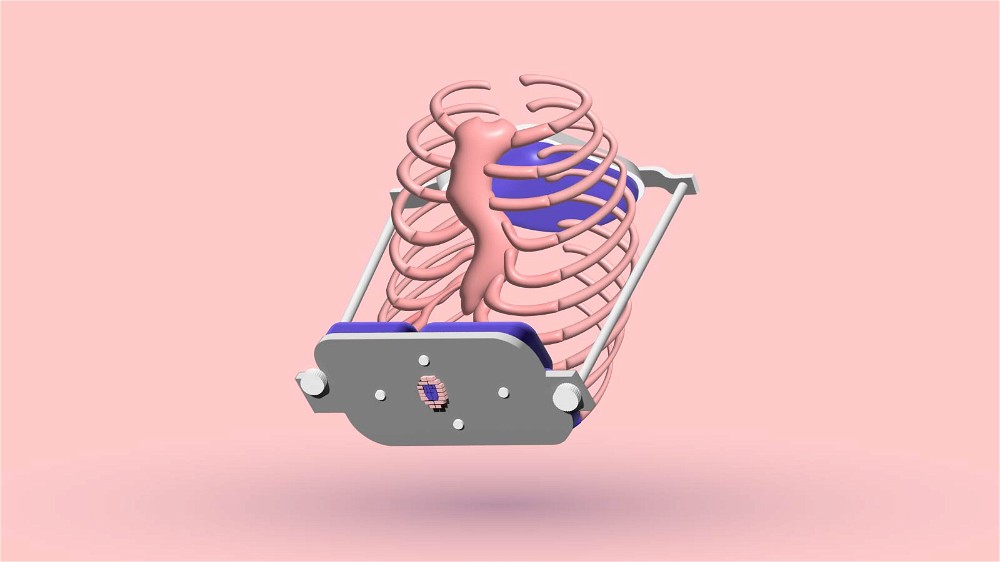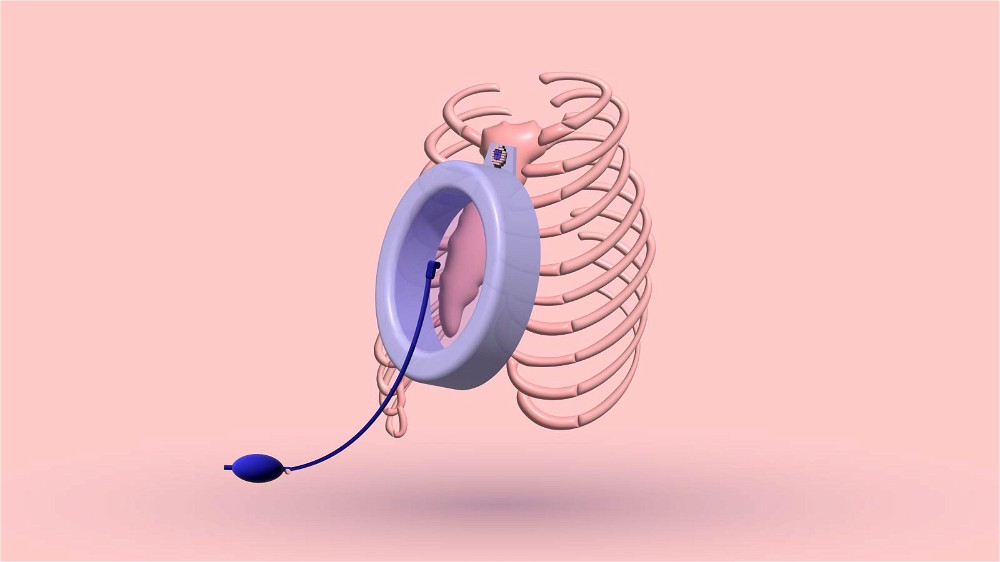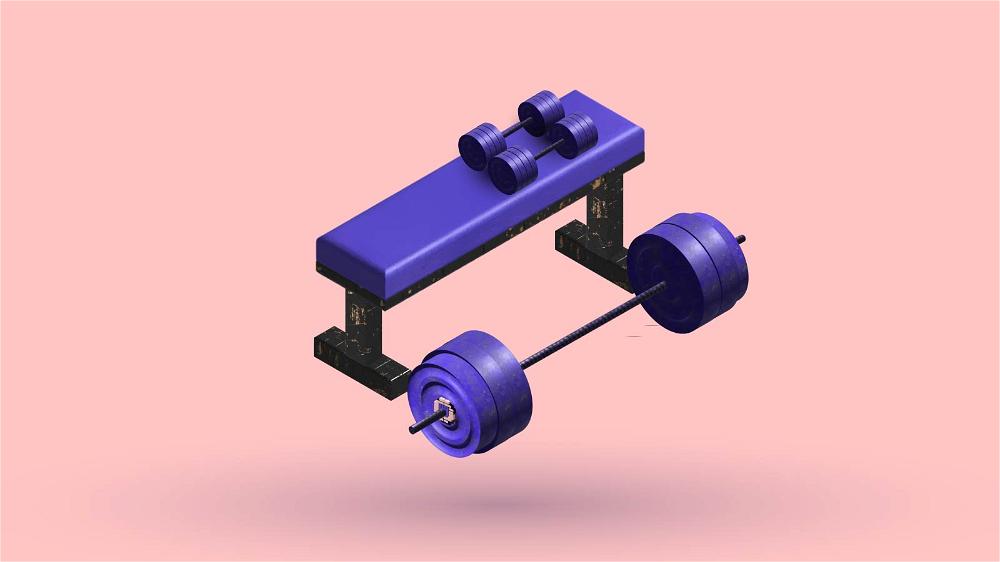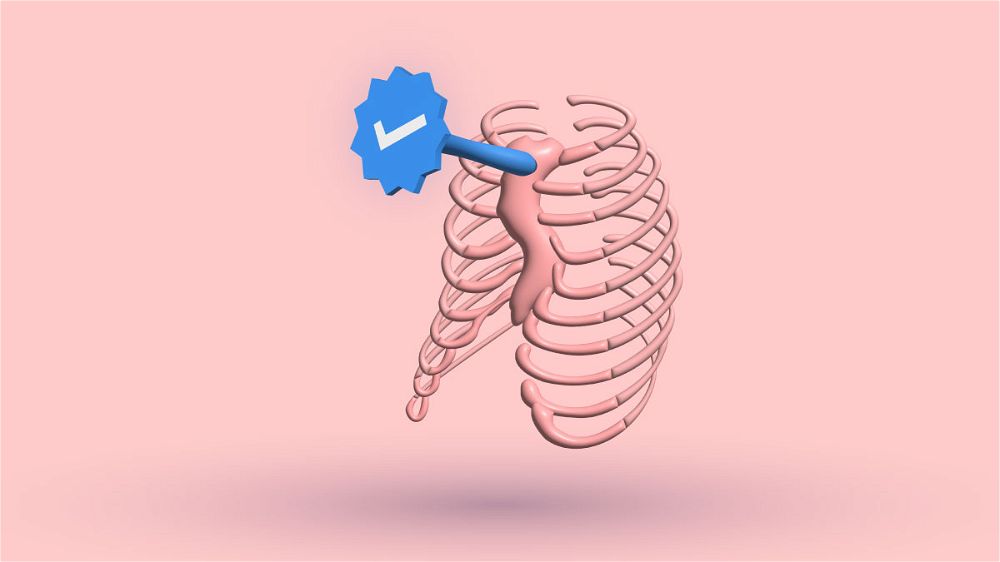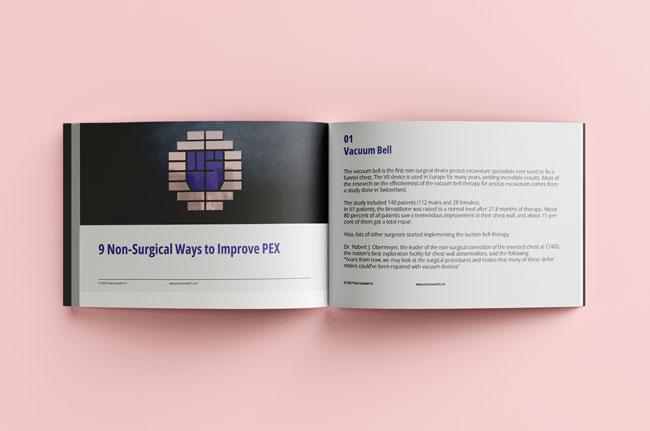The shoulder blades of a person suffering from pectus excavatum can protrude or look very noticeable, called scapular winging. If you have this problem, you can have problems lifting weights because it can weaken the arms, shoulders, or neck.
As you may already know, weightlifting is beneficial if you want to make your sunken chest less noticeable.
This article will explain how to improve scapular winging if you have pectus excavatum.
Examine Your Pectus Posture
The first thing you need to do to fix scapular winging is to check your pectus posture.
Video Inspection


Take a camera and film yourself from behind. See what your posture looks like on video. Slowly raise your arms above your head and lower them to the initial position. You can see where your scapula wings are when you drop your hands down in slow motion.
The scapula's unnatural popping off the ribcage is the scapular winging. A person can even fit his fingers below the shoulder blade if the winging is severe.
Uneven Shoulders

You should also pay attention if one of the shoulders is higher than the other. In my case, my left shoulder was always higher than the right one. A muscular tightness caused that, which was resolved by stretching the levator scapulae muscle.
A head nod to the side when you lift your arms signifies that the levator scapulae on the back and the side of the neck is tight. The primary function of this muscle is to elevate the scapula.
Serratus Anterior Weakness
Scapular winging is often caused by a weakness of the serratus anterior muscle (the fan-shaped muscle) on the sidewall of the thorax. Tight muscles on the other side of the serratus anterior can often cause this.
If all you focus on is strengthening the serratus muscle, your scapular winging won't be fixed because the problem, in this case, will be tightness.
Initial Stretches
Wall Stretch
Push your butt to the wall, interlock your fingers and straighten the arms as much as possible while keeping the butt on the wall. Reach out with your arms in a horizontal position as much as possible. Feel the stretch on the shoulder blade muscles.
Hold the stretch as much as possible. This stretch doesn't hurt like some of the other corrective stretching exercises. You'll feel a huge relief in your back after you do this.
Head Nod Stretch
The head nod and uneven shoulders height were caused by tight levator scapulae muscle.
To start this stretch, place your back and butt against the wall, and put your shoulders back and down. If your left shoulder is higher than your right, you need to look down at the right pocket of your clothes.
You will feel the tightness of the muscle in the neck just by looking down with a straight back and good posture. Make this stretch more intense by slightly pulling your head down with your right hand and raising your left arm to the ceiling.
Hold this stretch for about 30 seconds. Do this stretch plenty of times throughout the day to see results. You won't fix the problem overnight, but as soon as you're consistent with the stretches, you'll see postural improvements soon.
If you don't feel tightness in these muscles while doing the stretches, then the scapular winging may be caused by another problem you should consider.
Check Your Pectus Posture and Standing
You need to check the posture from the front and sides. As you may probably know, pectus posture is characterized by shortened and extremely tight chest muscles, weak and rounded shoulders, poor upper back strength, and a weak core. The internal rotators may be very tight and need to be released.
- Subscapularis (a triangular-shaped shoulder muscle placed between the scapula and proximal humerus) tightness.
- Lats tightness
- Pec minor tightness (most common in people suffering from pectus excavatum).
All these muscles need to be stretched throughout, throughout the day. The scapular winging in pectus excavatum sufferers may be worsened by the tight pec minor, caused by subconscious rounding of the shoulders trying to hide the deformity from others.
Long Thoracic Nerve Problem
The pectus posture generates a weakness in the serratus muscle by affecting the long thoracic nerve, which is the motor nerve of the serratus anterior muscle, whose function is to pull the scapula.
This nerve problem can induce weakness in the muscle it is associated with. You need to fix the root cause of this nerve problem if you want to improve scapular winging.
Strengthening the serratus muscle won't do anything if the root of the problem is different. If you have rounded shoulders, you must do corrective stretching.
However, if you surprisingly don't have any tightnesses in those areas further worsened by your inverted chest, you should focus on directly strengthening the serratus anterior muscle.
6 Serratus Anterior Strengthening Exercises
Scapular Push-Up


In a push-up position, let your shoulder blades touch each other. Keep your arms entirely straight without bending at the elbows. When doing the scapular push-up, always begin with the wall, not on the ground.
Start with your hands placed on the wall and your feet away, so you're leaning on it, and with your arms straight, see how far you can push your back away from the wall and then how close you can bring your back to the wall with arms straight.
This recommendation from Sal from MindPump TV was very effective for me, mainly because it forced me to focus on the movement and not on the shoulder blades or serratus muscle.
I mostly couldn't connect to the serratus anterior muscle as I could with other muscles, so focusing on the movement helped me a lot.
Apple Picker Exercise


Wrap an elastic band with grips behind a fixed object behind you, and extend your arm at a 45-degree angle like you're trying to pick an apple. Act like you picked the apple, slowly bringing it down to your hips with your arm fully extended.
Don't try to lean too much with your body in the movement. Try to feel the stretch in the scapula. Focus on performing the exercise correctly, other than aiming for higher repetitions.
This exercise will help you wake up the muscles that have been passive for too long and were worsening your scapula winging and pectus posture.
Lean Back Push-Ups



Go down on your knees in a push-up position with your back straight. Push through your scapula with your arms straight so your scapula is elevated. Slowly lean back to your heels while pushing your arms forward. You will feel this exercise in the serratus.
You will also mimic the downward-facing dog exercise in yoga, helping you improve your shoulder health and mobility.
Band Pull-Apart


You will need a resistance band to perform this exercise as well. Don't focus only on squeezing the back muscles as you would typically do the movement to strengthen the rhomboid.
This exercise aims to strengthen the serratus muscles by pulling your arms as further forward as possible in a protracted position.
Pull your arms apart while they're extended forward slowly. Don't rush, and aim to perform the exercise correctly.
Wall Screws


Put your fists on the wall and extend your arms as much as possible while keeping an upright posture and a straight thoracic spine. This way, you will isolate the serratus anterior to be appropriately targeted. Then, twist your fists into an external rotation.
Reset and perform the exercise again. Don't try to compensate by rounding the thoracic spine. I saw this exercise on the Athlean-X YouTube channel, which immensely helped me.
Dumbbell Pullovers or Straight Arm Pull Downs


This exercise won't directly work the serratus muscle but will help you stabilize.
These two exercises effectively correct scapular winging in patients with pectus excavatum.
Also, you can do the handcuffs with rotation exercises before doing these two. This is a very beneficial exercise that I highly recommend you do a few times throughout the day and before workouts.
A great tip is to concentrate on the movement and not the muscle.
Here's how you can perform this exercise:
Bottom Line
First, identify tightnesses in the muscles responsible for causing scapular winging, especially in the opposing groups of the serratus anterior muscle.
The tightness can cause weakness in the serratus, and by directly strengthening the serratus while you have tightness, you won't be likely to fix scapular winging.
Next, you should try to fix the physical impingement of the long thoracic nerve. After this is cleared up, it is time to strengthen the serratus anterior muscle.
This is the order to follow if you have scapular winging as a person with pectus excavatum. Do the exercises frequently, and the problem will eventually solve.
If you have any questions or concerns, please get in touch with me or leave them in the comments below.
4 Sources
- Scapular Winging: Symptoms, Causes, and Treatment [Internet]. [cited 2022 Dec
1]. Available from: https://www.healthline.com/health/scapular-winging - Levator Scapulae - Physiopedia [Internet]. [cited 2022 Dec 1]. Available from:
https://www.physio-pedia.com/Levator_Scapulae - Serratus anterior muscle. In: Wikipedia [Internet]. 2022 [cited 2022 Dec 1]. Available from: https://en.wikipedia.org/w/index.php?title=Serratus_anterior_muscle&oldid=1103795853
- ATHLEAN-X
TM - YouTube [Internet]. [cited 2022 Dec 1]. Available from:
https://www.youtube.com/c/athleanx




